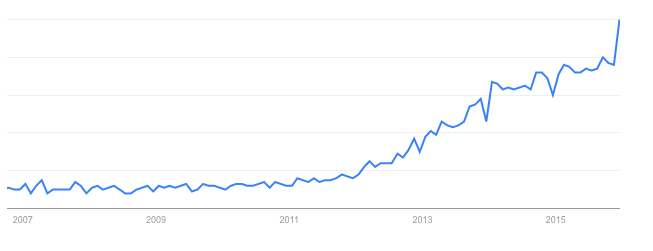
Use the 80/20 rule to win your customer’s trust and loyalty by adding value through useful and engaging content, instead of just punting products.
Let’s face it, there’s nothing endearing about 100% hard-sell advertising. The era of stereotypical “used car salesmen” and push marketing tactics is stepping aside to make way for inbound marketing and sales. Customers are gravitating toward businesses who add value by being helpful, authentic and building lasting, mutually beneficial relationships.
This trend was reiterated in Spitfire Inbound’s blog post on Why only 20%of your marketing should be hard sales. Darren Leishman, MD at Spitfire Inbound, published a blog post based on the Pareto Principle (otherwise known as the 80/20 rule) which talks about how you can begin creating helpful and engaging content that your customers (and potential customers) will love.
Darren explains, “most marketing skips the nurturing and goes straight to ‘buy me!’, building trust through awareness and consideration stage content sets the scene for loyal, and even evangelical customers”. In order to stand out from your competition, you need to keep your content interesting, relevant and most importantly helpful - this is not just “advertising wrapped up as a blog post”.
Your content should be aimed at starting a meaningful conversation with your audience.
Content should address your customers’ key pain points - guiding them through the buyer’s journey and helping them make informed decisions. According to HubSpot (marketing and sales software developer), 81% of buyers research products online before making a purchase. This just shows how important it is to position your brand as a thought leader; providing information that is relevant, to the right person at the right time.
Darren shows us the numbers, “88% of B2B marketers are using custom content marketing (up 86% from 2015), and 76% of marketers plan to produce more content this year”.

Data source: Spitfire Inbound
He goes on to explain that “the 80/20 rule is a good gauge to measure your content”.
Thought leaders in the industry, like HubSpot, Contently and Social Media Today all talk about the 80/20 ratio as being the golden ratio with Social Media Today writing “it simply comes down to this: use just 20% of your content to promote your brand, and dedicate 80% to content that really interests your audience and engages them in conversations.”
Product marketing (including traditional advertising, paid advertising, direct mail and product placements) is still an integral part of any integrated marketing strategy. However, product marketing should be partnered with a strong inbound (content) marketing strategy which increases qualified traffic to your website. The emphasis here is on the “qualified” nature of the traffic that is attracted through inbound marketing - as these visitors have a higher chance of converting to sales qualified leads and ultimately being nurtured into customers.
So what content is helpful and interesting?
Darren’s post explains that educational content should make up your 80% - this is content that doesn’t talk about your products or brand but instead helps your visitors to identify and articulate their pain points (awareness stage content) and then weighs up possible solutions to these pain points (consideration stage content).
Buyer behaviour has changed and in the age of the informed consumer, it’s imperative that companies adjust their strategy accordingly. This rule is not only applicable to your digital marketing strategy, but should filter through to all of your marketing platforms to avoid your messages feeling disconnected. If every aspect of your sales and marketing operates in a vacuum, your brand runs the risk of coming across insincere.
It’s important to remember that although there’s been a huge spike in the use of digital technology, digital marketing has not yet surpassed traditional forms of advertising in terms of trust. The top five most trusted advertising platforms are print, followed by televison adverts, catalogues or brochures, radio adverts and billboards.
In short, an integrated marketing strategy, aligning all your business’ communications, has become more important than ever. Contact us to help you align your marketing strategy.
If you stick to the 80/20 rule when you’re planning your integrated marketing strategy, you’ll start generating qualified leads that you can nurture into sales.
Download our Integrated marketing eBook for more indepth insights on how to align your marketing and sales.




SUBMIT YOUR COMMENT